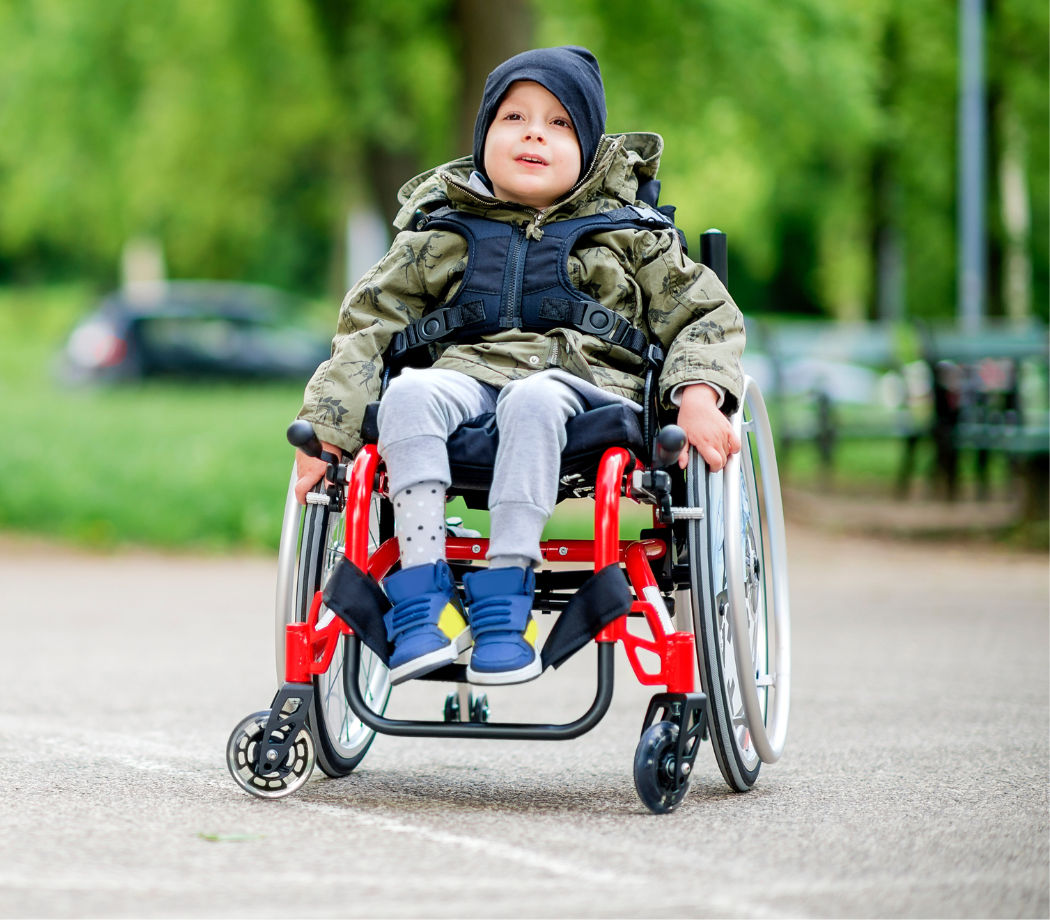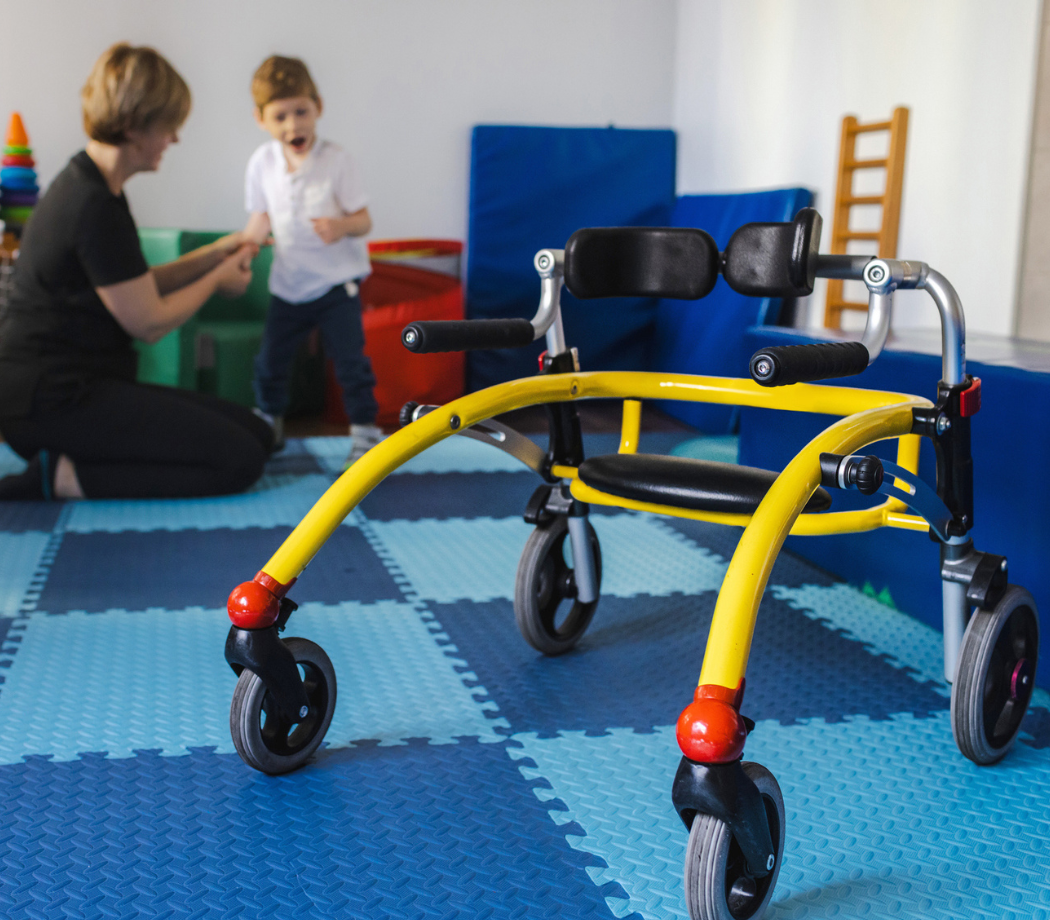Energy Expenditure in Pediatric SCI

There are many issues to confront when caring for a child with spinal cord injury. Bladder, bowel, skin issues are certainly the top three but there are other issues, some which are very subtle. One of these issues is energy expenditure. Typically, people just think about the amount of energy needed to perform activities, which is part of the metabolism process, but energy expenditure also includes energy used inside the body.
Energy expenditure is the amount of internal body energy used to keep the body functioning. This includes the main internal body activities of respiration, circulation, and digestion. Physical activity affects the amount of energy needed to support internal body activities.
Essential components of energy expenditure are:
- Resting Metabolic Rate (RMR) which is the amount of energy needed when the body is at complete rest. These factors include energy required to keep essential organs and cells functioning. This largest proportion of energy used which is estimated to be 65-75% of total energy expenditure.
- Thermic Effect of Food (TEF) is the amount of energy to digest food. Generally, this is calculated after several meals but can be assessed after just one. The type of food and fluid eaten can affect the amount of energy required.
- Adaptive Thermogenesis (AT) includes energy expenditure in relationship to the body responding to temperature changes. It includes many body activities such as dilating/constricting blood vessels, changes in blood pressure, shivering and non-shivering adjustments.
- Activity Related Energy Expenditure (AREE) or the amount of energy used to support movement including exercise and non-exercise activities. This includes all movement which can be voluntary for example walking, waving, typing, pushing, or involuntary movement which includes movement examples of twitching, eye blinking, posture control, and tone (spasticity).
- Growth is included as a component in the pediatrics as the body requires energy to support itself while it enlarges to adult size.
The challenge is to maintain energy intake to energy expenditure without losing the nutrients to maintain health, growth, and development. Without adaptions to the body changes after SCI, health issues can arise. These issues are prevalent in both pediatric and adult individuals but take on importance as early onset can affect the child for a lifetime.
Health related issues to energy imbalances are the development of cardiovascular disease, metabolic syndrome, insulin resistance, diabetes, decreased muscle mass, decreased resting energy expenditure, decreased peak oxygen consumption, bone fractures, as well as the decreased ability to maintain function.
In the population of pediatric patients with spinal cord injury, weight fluctuations can be apparent in either direction. Reduced weight can result from muscles that lose mass, tone, or eating less than the number of calories required due to full feeling from a slow-moving bowel or difficulty eating. Increased weight can come from lack of energy expenditure, consuming too many calories, or burning too few calories.
Estimation of calorie intake by breakdown of protein, carbohydrates, fat, fiber, vitamins, minerals, and water can be established by a dietitian who is experienced in pediatric spinal cord injury. Traditional calculations typically are not predictable for children with SCI. Consideration of the child’s size before the injury, health conditions including spasticity, activity level, and personal preferences should be incorporated. Education about diet and how to make food appealing to a child at their developmental level can be provided.
Providing a diet is one step. Adherence is another issue as accommodations need to be made for alterations for events such as birthday party cake and pizza parties. The parent and child should be involved as both will be needed to be able to adapt food and food challenges over weeks and months.
Exercise should be set as a priority. Several options should be suggested. Set times for range of motion exercises or stretching should be built into a daily schedule. The younger children are, the more this becomes a norm, with or without spinal cord injury. Movement should be included in all activities. This can include dressing by moving all arm joints prior to putting the arm in a sleeve. Changing a diaper can include some leg movements. Allowing a child to free form play on the floor lets them have control of what they are doing. Involving play as an exercise, reaching, and throwing a balloon or ball, or other movement adds fun to activity.
Seeking activities and toys that encourage movement provides activity disguised as play. Adaptive biking is a good example. Non-medical strollers can be purchased that have foot pedals that move as the stroller moves. Leg supports need to be fabricated but this exercise adds repetitive, passive range of motion during a fun activity of riding in the stroller.
Teens maybe more interested in sports, either with their peers or adaptive. Schools allow time for physical education. You may need to advocate for your child to participate in class with their school peers. Also, available are adaptive sports such as swimming, volleyball, rugby, basketball, essentially any sport. Ideas for different sports that may interest your child are widely available for viewing in the Paralympic games however many communities have opportunities that can include children of all abilities.
Newer therapies can enhance activity. Electrical stimulation and functional electrical stimulation have been noted to strengthen muscles as well as to provide stimulation to the nerves and muscles which requires the body to use energy. Standing in a standing frame or standing wheelchair stretches the muscles and joints differently than in the sitting position.
It is critical to monitor children during their activity as they may not feel the consequences of movement. Muscles do fatigue, even if that sensation is not felt. Repetitive activity can lead to injury such as lactic acid build up, lower limb edema, and episodes of autonomic dysreflexia. Starting an activity program should be gradual.
Prior to starting any activity/exercise program, the child should be evaluated for health concerns such as blood clots, joint dislocations, and bone density. Even if autonomic dysreflexia was not previously experienced, blood pressure should be monitored at times during the activity to evaluate for the presence especially for silent autonomic dysreflexia. Seating equipment for the activity may need to be adjusted and new areas for potential pressure injury should be monitored.
Although there is an abundance of information about energy metabolism in adults, less is known about children. The key element is to ensure their energy expenditure does not lead to issues in adult life. In the future, more will be known about the effects of genetics on energy expenditure which will provide more information for preventative measures and treatments.
Written by Linda M. Schultz, PhD, CRRN.
References and Further Reading
Heaney J. (2013) Energy: Expenditure, Intake, Lack of. In: Gellman M.D., Turner J.R. (eds) Encyclopedia of Behavioral Medicine. Springer, New York, NY. https://doi.org/10.1007/978-1-4419-1005-9_454
Johnston TE, McDonald CM. Health and Fitness in Pediatric Spinal Cord Injury: Medical Issues and the Role of Exercise. J Pediatr Rehabil Med. 2013;6(1):35-44. doi: 10.3233/PRM-130235. PMID: 23481890.
Liusuwan A, Widman L, Abresch T, McDonald, CM. (2004) Altered Body Composition Affects Resting Energy Expenditure and Interpretation of Body Mass Index in Children with Spinal Cord Injury, The Journal of Spinal Cord Medicine, 27:sup1, S24-S28. DOI: 10.1080/10790268.2004.11753781
Monroe MB, Tataranni, PA, Pratley R, Manore MM, Skinner JS, Ravussin E. Lower Daily Energy Expenditure as Measured by a Respiratory Chamber in Subjects with Spinal Cord Injury Compared with Control Subjects. Am J Clin Nutr 1998; 68:1223–7. © 1998 American Society for Clinical Nutrition
Osorio, M., Reyes, M.R. & Massagli, T.L. Pediatric Spinal Cord Injury. Curr Phys Med Rehabil Rep 2, 158–168 (2014). https://doi.org/10.1007/s40141-014-0054-1
Phillips WT, Kiratli BJ, Sarkarati M, Weraarchakul G, Myers J, Franklin BA, Parkash I, Froelicher V. Effect of Spinal Cord Injury on the Heart and Cardiovascular Fitness. Curr Probl Cardiol. 1998 Nov;23(11):641-716. doi: 10.1016/s0146-2806(98)80003-0. PMID: 9830574.
Patt PL, Agena SM, Vogel LC, Foley S, Anderson CJ. Estimation of Resting Energy Expenditure in Children with Spinal Cord Injuries. J Spinal Cord Med. 2007;30 Suppl 1(Suppl 1): S83-S87. doi:10.1080/10790268.2007.11754610
Tanhoffer RA, Tanhoffer AIP, Raymond J, Hills AP, Davis GM. (2012) Comparison of Methods to Assess Energy Expenditure and Physical Activity in People with Spinal Cord Injury, The Journal of Spinal Cord Medicine, 35:1, 35-45. DOI: 10.1179/2045772311Y.0000000046





